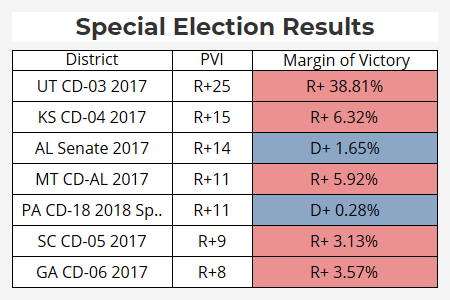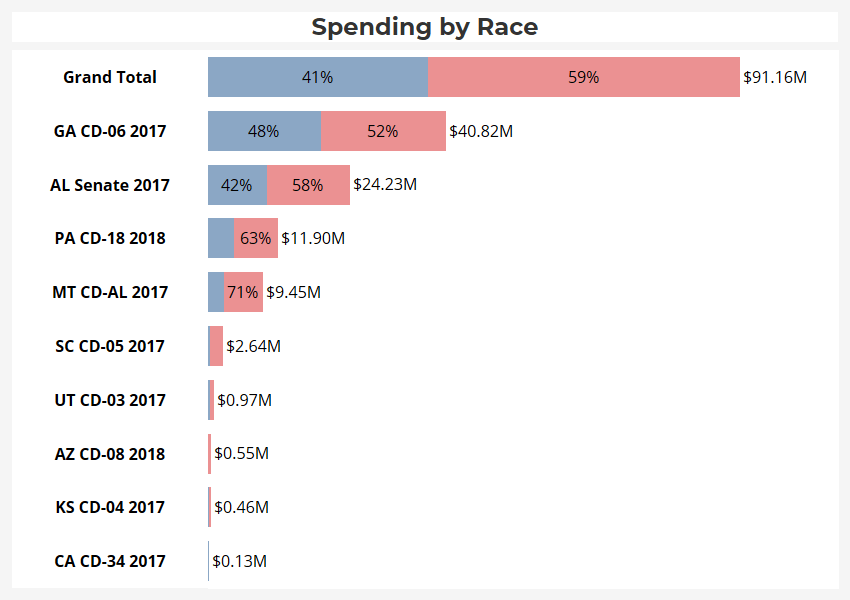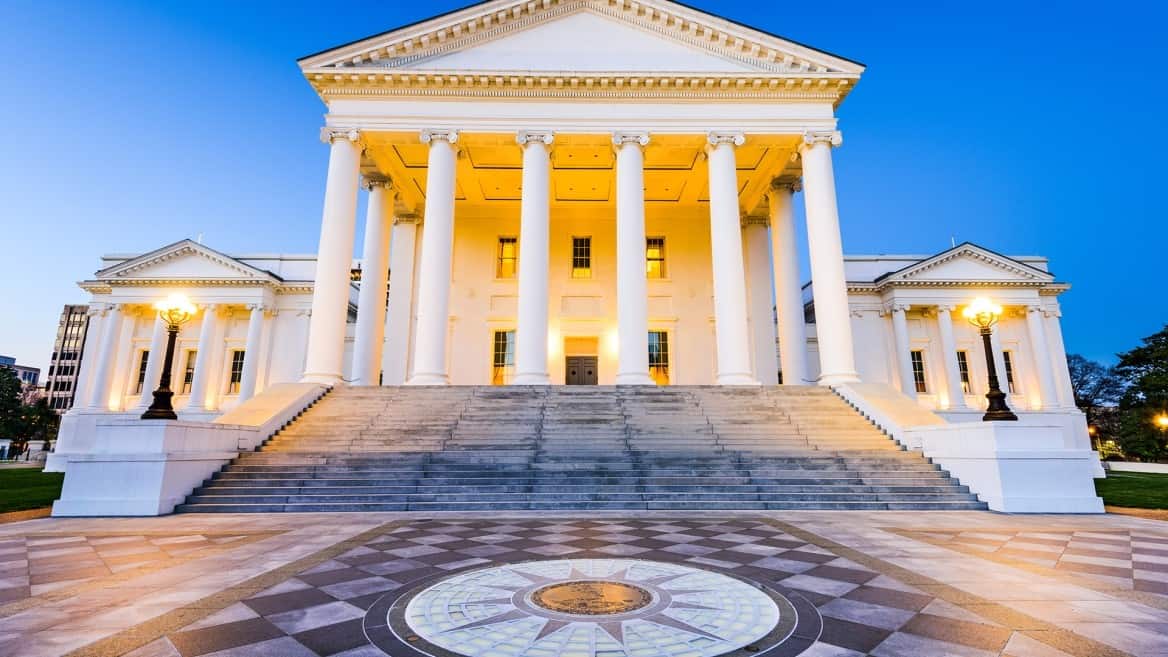Everyone in the political world knows about some of the most high profile special elections of the last year; PA-18, GA-06, Alabama Senate. However, these were not the only special elections, and we believe that looking at advertising data for some of these lesser known elections can provide additional insight. Rather than wasting time re-hashing races that have been covered in great detail, looking at races such as KS-04 and SC-05, which each had unexpectedly close special elections in the first half of 2017, will be of more value.
2017 Special Elections Analysis

One cannot separate a race from the players involved: the candidates, the interest groups, the district’s unique characteristics. This, combined with the small sample size of special elections, make it hard to draw large conclusions from a small slate of special elections. However, some races can provide more of a “blank slate” than others. This factor is part of what makes SC-05 and KS-04 particularly useful for analysis. Everyone knows Jon Ossoff. Without cheating, do you know the name of the candidates who won in SC-05 and KS-04? I would bet most of my staff does not. Advertising data for these races show relatively low spending, the air waves were not saturated, and these were are not voters who are accustomed to high-profile, contentious votes, and yet Democrats vastly outperformed their past performances in the district.
Our advertising data shows that SC-05, contested on the same day as GA-06, did see some spending, $2.6M in total, 88% of which came on the Republican side. However, with most of the nation’s eyes on the GA-06, it flew way under the radar. The result was actually more surprising. In a district more Republican-leaning than GA-06 (PVI of R+9 vs. R+8) Republican Ralph Norman only prevailed by 3.1%, a margin closer than that of GA-06. The big difference came in turnout. Democrats turned out at 40% of the 2016, while Republicans turned out only at 28%. While both of these numbers are very low, as one might expect in a special election, it shows a substantial enthusiasm gap. It also goes against the conventional wisdom that Democrats can only be competitive in high-turnout elections.

Even before the June 20 elections in Georgia and South Carolina there were signs that the national political environment was not looking kind for Republicans. In KS CD-04, an R+15 district, Republican Ron Estes triumphed by only 6.3% of the vote in a special election to replace Mike Pompeo. This election saw only $460k in spending, 75% of which came on the Republican side. Despite this, Democrats turned out at extremely high rates for a special election. Democrats turned out at 69% of 2016 levels, while Republican turnout plunged to 38%. This further demonstrates the enthusiasm gap in a district in which the Republican candidate had only received less than 60% of the vote once since 2000.
These numbers suggest that Democrats are proving to be more successful than normal in both high and low turnout races, including races where they have little-to-no media presence. These are all races with no incumbents, in conditions that may differ greatly from the midterms. However, a clear pattern is developing. Few Democratic candidates will be as good as Lamb, and likely no Republicans as bad as Moore, but unknown Democrats are coming within a few points of winning in quite conservative districts, often with very light media presence. It is clear that in the midterms even Republicans considered safe must be prepared for tough campaigns. This starts with a strong media presence that motivates a candidate’s supporters to get to the polls.



